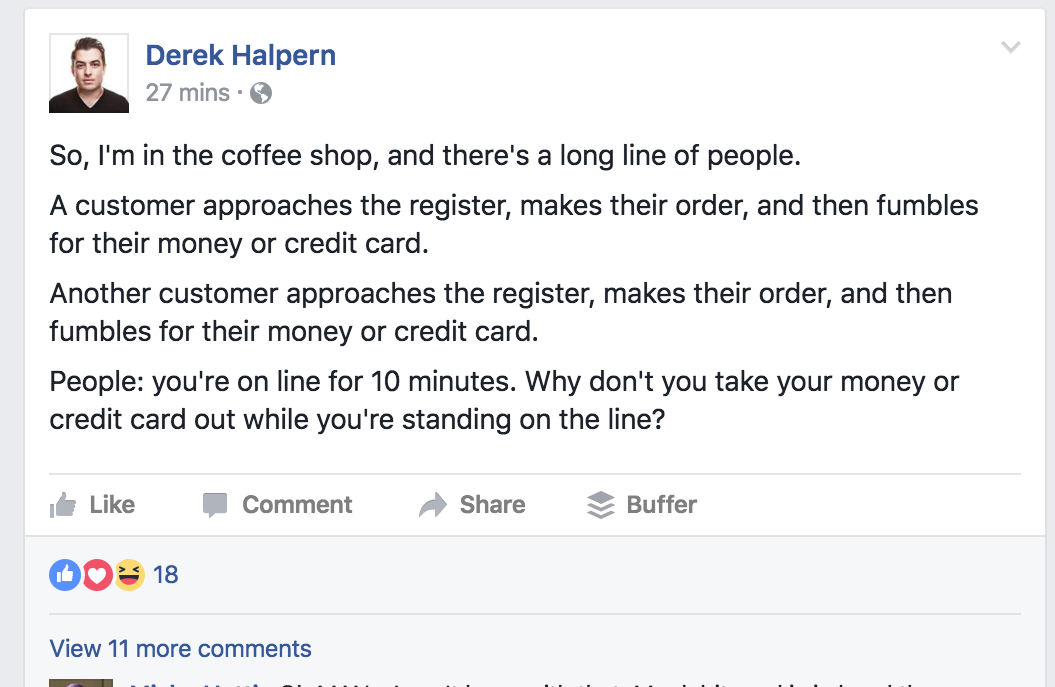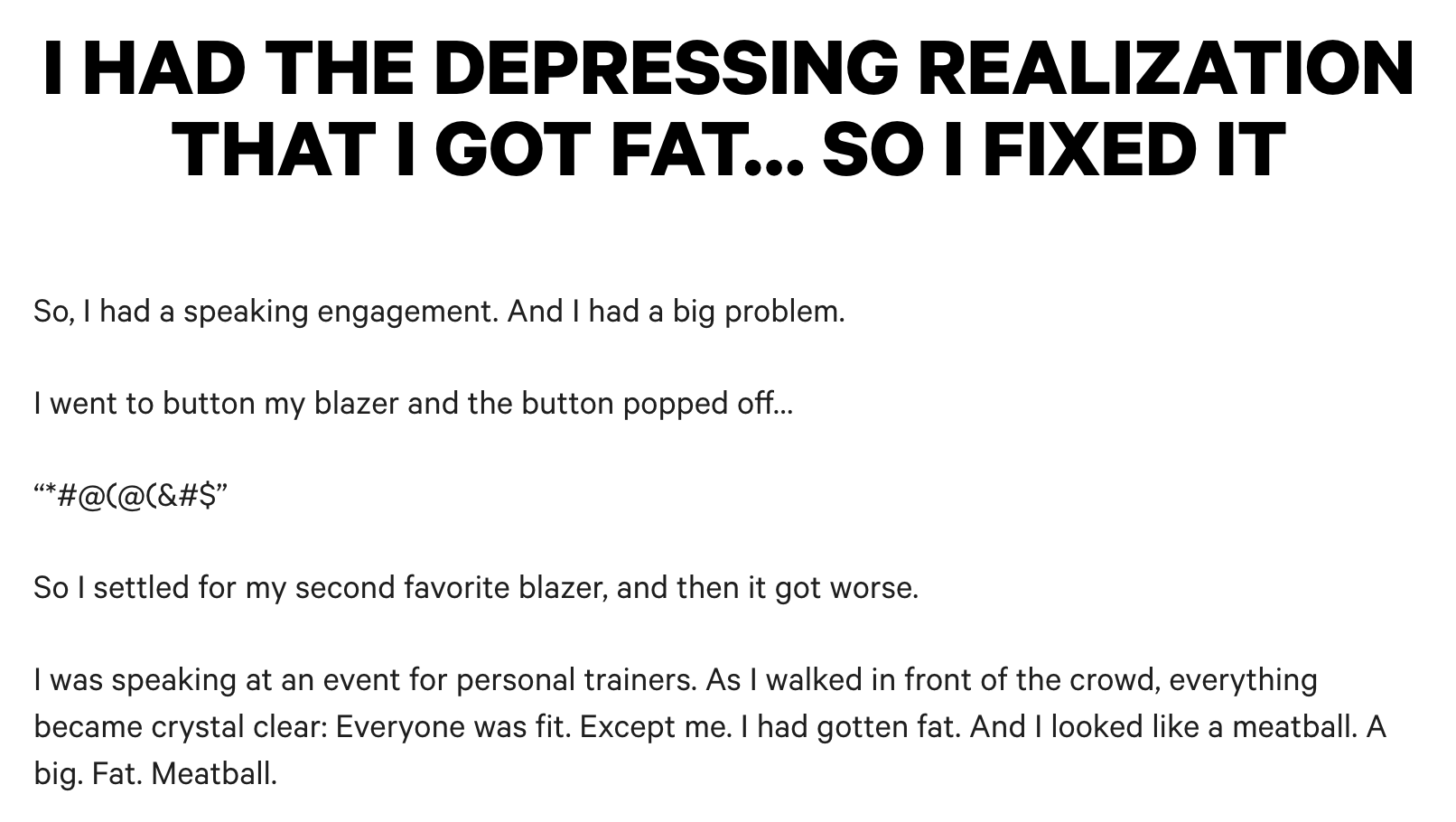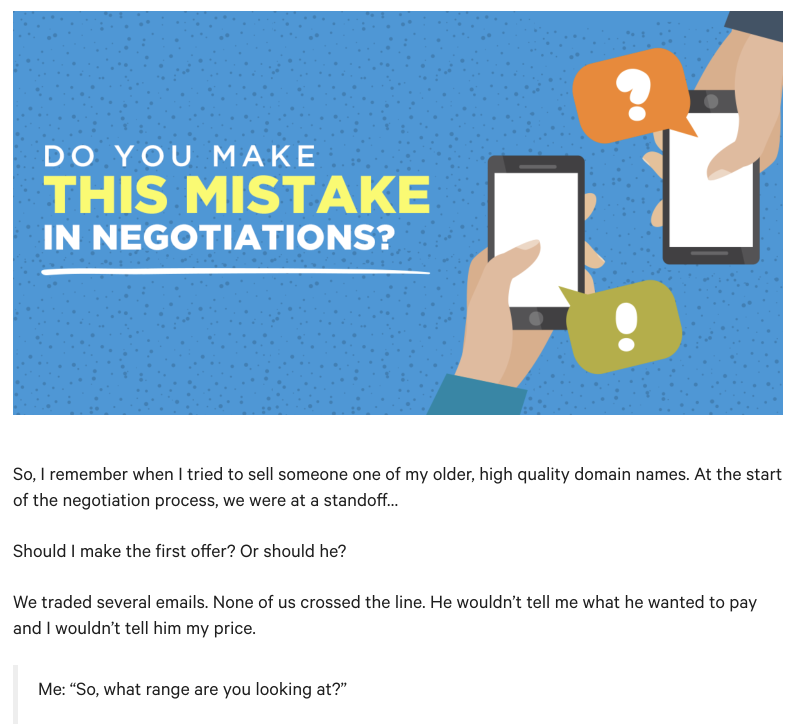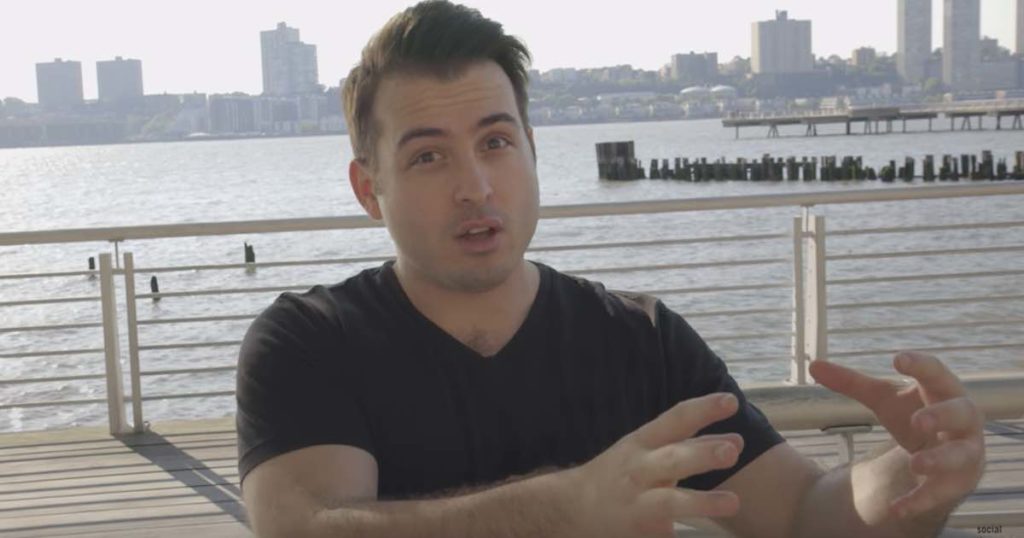So, I’m running a mastermind group. One of the members was struggling with content creation. She said:
Our blog posts are informative. But how do we make them more engaging for our readers?
What did I tell her?
I shared my “3 sentence rule” for making boring content more engaging. Here it is…
First of all, she was right:
The information in the articles was GREAT.
You see, this particular blog was about personal finance – a complex subject. The writing was good. It was obvious the writers know what they’re talking about. Plus, the articles were well-researched and easy-to-read.
So far so good.
But there was ONE thing missing…
The Secret to More Engaging Content
Can you relate? This is a common problem. You have great information on your blog but it’s just… kind of boring. If this sounds familiar, it’s more critical now than ever to solve it.
So, I read two articles on this particular blog by one of my students.
Immediately I saw the problem:
It felt like I was reading a Wikipedia entry – it was dry and boring. Like a gluten-free, unsalted rice cake. NOT fun to read. NOT quite share- or comment-worthy, either. Even though I know much more about tax-loss harvesting…
…all I got was “information.”
So what was missing?
Simple.
The key to more engaging content is:
STORY.
Everybody knows this, too.
Stories connect.
So, the real question is…
HOW DO YOU DO IT?
How do you TELL a story that pulls people into your content? Especially if you’re not a professional “storyteller.”
I mean… Chances are, you have no plans to write a screenplay anytime soon. You just want to create more engaging content for your business, right?
Right.
Well, I’m going to show you how to infuse some story-magic into your content.
You don’t need to write a novel. Or turn every blog post into a short story…
As you’ll see, all it takes is a few short sentences. You can add them at the beginning of your blog posts, social media updates, sales page, etc.
That way, you’ll pull more people in… and keep them reading. Or watching. Or listening.
But first…
We need to break down the structure of any good story:
A Proven Story-Structure that Anyone Can Use
Hollywood screenwriters have used a proven, 3-act structure to tell engaging stories for decades.
It goes like this:
Act 1: Setup
The setup is like the opening scene (or scenes) in a movie.
Basically, the setup answers the “Who?”, “What?”, “Where?”-type questions of your story.
But more importantly…
Every story needs an “inciting incident:” Some EVENT that kicks of the confrontation, conflict, or quest that will come in Act 2.
Just ask yourself, “What happened to put this story in motion?”
That’s your inciting incident.
To illustrate, I made up a story and wrote the setup:
“Doh!”
I couldn’t believe what had just happened.
When I got the news, I jumped up, grabbed the keys off my desk, and ran out of the office.
“The baby is coming!”
My wife had just gone into labor.
We prepared for this moment for weeks. The plan was to go home, grab the pre-packed bag, and meet my wife in the hospital.
But somehow, my mind stopped working…
So I arrived at the house – I’m about to be a father! I get out of the car, and rush to the front door.
“Oh shoot, where are my keys?”
So back to the car to grab the keys…
The only problem?
The car was locked. And the keys were inside.
Uh-oh! The keys are locked in the car – that’s the inciting incident.
This isn’t the greatest story ever told. But do you see how it works? You’re going to be at least a liiittle bit curious about what’s going to happen.
This marks the beginning of…
Act 2: Confrontation
Or as I like to call it, the CONFLICT.
In my made-up example, the conflict is pretty clear:
“How will this guy unlock his car and get to the hospital in time? Or will he?”
The rest of the story will answer that question.
Now here’s what makes this interesting… During the conflict, there’s usually a series of OBSTACLES to overcome. Because every story needs some kind of quest, challenge or problem to solve. Without that, it’s not a story, is it?
In our example, it could go like this:
I instantly reached for my phone… S%*t! It’s also locked in the car.
So I knock on the neighbor’s door… but no one’s home.
I try to stop a car that’s passing by… but I almost got run over!
But then there’s a TURNING POINT:
That’s when I remembered: There’s a bike behind the house!
This turning point is the second “plot twist.” It leads directly into…
Act 3: Resolution
…where the conflict gets resolved.
After a breakneck bike-ride through rush-hour traffic, our hero makes it to the hospital.. Just in time!
Do you see how it works?
The big question we set up in act 1 gets answered!
Of course, there are more intricacies to the perfect 3-act story. But that’s the basic structure. And there’s really no need to get more technical than this.
But now…
How are you going to use this in your content?
You don’t have to turn every blog post into a full-on story. But what you CAN do is add the ELEMENT of story to your content.
Especially at the BEGINNING of your blog posts, videos, social media updates etc.
I’ll explain.
The 3 Sentence Rule: Get to the Conflict… FAST!
The 3-sentence rule takes the 3-act structure… and CONDENSES IT.
Think of it as the 3-act structure “on steroids.”
This is powerful because attention spans online are short – and getting shorter.
So, how does it work?
Well, you don’t have to tell your WHOLE story in 3 sentences…
But you need to get to the conflict… FAST.
And you should be able to summarize it in 3 sentences.
Like this:
- Sentence 1: Context
- Sentence 2: Inciting incident
- Sentence 3: Conflict
Let me show you how I used the 3-sentence rule in THIS article…
In the first sentence I set up the story:
“So I’m running a mastermind group.”
In sentence 2 I described the inciting incident:
“One of the members was struggling with content creation.”
In sentence 3, I described the conflict:
“Our blog posts are informative. But how do we make them more engaging for our readers?”
It’s so meta!
Now you may say, “Derek, that’s not a story!”
Yeah. But do you recognize the story structure I used?
Plus, the point is:
You’re not trying to write a novel, right? That’s why the 3-sentence rule is a great way to start. It helps you get to the conflict – right away.
And that’s how you pull your audience in.
Let me show you a few more examples.
Example #1: Coffee Shop Stories
If you don’t follow me on Facebook, I share lots of stories there.
Coffee shop stories to be exact.
Here’s one:

“So I’m at the coffee shop…”
Okay, it’s 4 sentences. But do you see how I get to the conflict FAST?
There wasn’t much more to the story here. But this could work great as an intro to a blog post or another piece of longer-form content.
For example…
Example 2: My Fitness Journey
I recently wrote about my struggle with fitness as an entrepreneur.
Look how I started that blog post:

I got fat. So I fixed it.
“So I had a speaking engagement.”
“I went to button my blazer and the button popped off…”
“I was speaking at an event for personal trainers and everyone was fit except me.”
Setup. Inciting incident. Conflict.
When you follow the 3-sentence rule, you’ll be able to condense your stories to their essence.
Another example…
Example #3: “Do You Make This Mistake in Negotiations”
This is a recent blog post about how to negotiate.

Do you make this mistake in negotiations?
Again, all it takes is 3 short sentences:
“I was trying to sell a domain name.”
“Neither of us wanted to make the first offer.”
“We were at a standoff – here’s what happened.”
Remember, get to the conflict fast!
The thing that’s so great about stories like this is that it takes your content from the abstract to the concrete.
You see, I could have started the blog post with:
“Have you ever wondered who should make the first offer in a negotiation?”
But the story is WAY more engaging.
Don’t you think?
When you read my blog, you’ll see that I do this all the time.
I even do it on my sales pages.
Example #4: Seven Figure Courses
This example is from the sales page for one of my flagship trainings, Seven Figure Courses. Take a look:
And there I was. I was about to release my first online course, and the day before it went live, something terrible happened…
You might be thinking my computer blew up…
Or perhaps a family member got sick…
Or maybe my servers failed and I couldn’t process transactions…
Those would be easier problems to overcome.
The truth is, what I was dealing with was even worse…
It wasn’t a problem I could throw money or resources at to solve.
It wasn’t a problem that I could “think” my way out of.
It’s embarrassing to even talk about it now, but the truth is…
I got cold feet.
I was literally on the verge of canceling the entire launch. The feelings of self-doubt and fear completely overtook me.
It’s more than 3 sentences. That’s okay. The extra stuff just adds some drama.
When I first wrote it, I started with just 3 sentences.
“I was about to launch my course.”
“But then, something terrible happened: I got cold feet.”
“I didn’t know how to do you deal with the feelings of self-doubt and fear.”
You can flesh out your stories later. To get started, use the 3-sentence rule. Get to the conflict fast.
This is the best and easiest way you can make your boring content more engaging.
So now it’s your turn.
Can you add a story element to an existing blog post? Or can you share a new story on social media RIGHT NOW?
Use the 3-sentence rule.
Leave a comment and let me know how it goes.
And then, please do me a favor.
Do you know someone who’s trying to make their content more engaging?
Share this post with them now.
